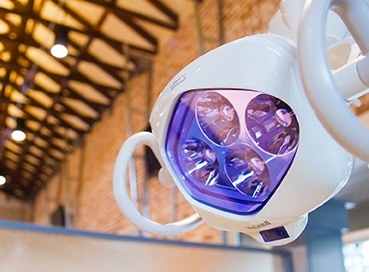Little Known Facts About Orthodontics.
Little Known Facts About Orthodontics.
Blog Article
8 Easy Facts About Orthodontics Described
Table of Contents9 Simple Techniques For OrthodonticsIndicators on Orthodontics You Should KnowAll About OrthodonticsThe Single Strategy To Use For OrthodonticsExamine This Report about OrthodonticsExcitement About OrthodonticsThe Basic Principles Of Orthodontics Getting My Orthodontics To Work
You may feel some discomfort for some time when your dental braces are first placed on and when they are changed. It will take a little time to get used to your dental braces and they can trouble your lips and cheeks. If this occurs, a relief wax can be related to your dental braces.
Not known Incorrect Statements About Orthodontics
Parents need to manage their kids to make certain they do an excellent task cleansing their teeth and dental braces and follow the advice of their dental practitioner or orthodontist. If you have dental braces, do not bite on tough things such as ice cubes and nuts. Orthodontics. Do not eat the ends of pens or pencils
Issues that are not dealt with can create the treatment to last much longer. The traditional metal dental braces, there are tooth-coloured ceramic dental braces that are less visible. Dental braces and elastics can additionally be multicoloured.
The Greatest Guide To Orthodontics
It guides the direction of tooth movement and jaw growth in someone who is still growing. There are different sorts of headgear and they may be used during any type of part of the orthodontic therapy. Your orthodontist or dental expert will certainly reveal you exactly how to place on the headwear and tell you the length of time to wear it each day.
They might require to be put on regularly or part of the time. Tooth elimination might be required if your teeth are crowded or if a tooth is terribly out of position. Jaw surgery (or orthognathic surgery) may be required when there are significant differences in the size or placement of the top and lower jaws.
An orthodontist is a dental professional educated to identify, prevent, and deal with teeth and jaw irregularities. Orthodontists work with individuals of all ages, from children to grownups.
The Ultimate Guide To Orthodontics
Orthodontic residency programs provide extensive, concentrated guideline for dental experts. They focus on 2 locations: Just how to properly and safely move teeth Exactly how to appropriately guide development in the teeth, jaw, and faceOnce an orthodontist has completed training, they have the option to come to be board visit site accredited.
Imbalance, or malocclusion, is one of the most common reason people see an orthodontist. It is hereditary and is the result of size differences between the upper and lower jaw or between the jaw and teeth. Malocclusion causes tooth congestion, an askew jaw, or uneven bite patterns. Malocclusion is generally treated with: Your orthodontist attaches steel, ceramic, or plastic square bonds to your teeth.
If you have only minor malocclusion, you might have the ability to use clear braces, called aligners, as opposed to conventional braces. Some people require a headwear to aid move teeth into line with stress from outside the mouth. After dental braces or aligners, you'll require to use a retainer. A retainer is a personalized gadget that keeps your teeth in place. Orthodontics.
The Definitive Guide to Orthodontics
They're frequently utilized on children. They can produce extra area in the mouth without having to draw teeth. If you have a serious underbite or overbite, you could need orthognathic surgical procedure (likewise called orthodontic surgical procedure) to lengthen or reduce your jaw. Orthodontists use cords, surgical screws, or plates to sustain your jaw bone.
During your initial orthodontic appointment, you'll likely have: A dental examPhotos taken of your face and smileDental X-raysPanoramic (360 degree) X-rays of your face and headImpressions to produce mold and mildews of your teethThese tests will aid your orthodontist recognize how to proceed with your therapy. An orthodontist is a dental expert that's had Discover More Here training to treat your teeth and jaw.
All about Orthodontics
An orthodontist is focused on your bite, so something like a broken tooth would be handled by a dentist. Orthodontists are focused on your bite, or the way your teeth fit with each other, and the straightness of your teeth.

Some Known Details About Orthodontics
Orthodontic therapy is understood for its ability to change smiles, yet its benefits prolong beyond plain appearances. Some of these advantages are: One of the considerable orthodontic appliances is that it launches a transformative procedure beyond tooth visit their website placement.
Careful alignment minimizes the tendency for teeth to change or regression post-procedure. This positioning conservation guarantees that the investment in orthodontic care returns enduring advantages for years. Orthodontic therapy has developed significantly, supplying a spectrum of therapy techniques tailored to specific requirements and choices. From standard braces to very discreet clear aligners like Invisalign, clients can access varied alternatives that line up with their lifestyle and visual choices.
6 Simple Techniques For Orthodontics
These adjustments are crucial for maintaining development and making certain the treatment stays on track according to the well established strategy. The orthodontist creates a customized procedure plan based upon the analysis documents and the person's unique demands and choices. This strategy outlines the recommended activity to resolve the identified orthodontic issues and achieve the desired outcome.
Report this page